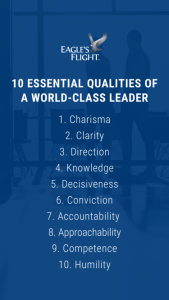Coaching employees addresses performance objectives and helps unleash the potential within each person. In fact, research suggests that coaching not only helps individuals perform better, but it also drives overall motivation and commitment to their work. A meta-analysis of multiple studies on organizational coaching found that coaching at work positively impacts employee performance. It also encourages a more positive attitude about one’s work and the company as a whole.
This raises the question, are your leaders effectively coaching their employees to improve their performance? Do they have the skills they need to do so? Whatever your answer may be, the following tips may help them begin or motivate them to continue coaching employees to improve their performance.
1. Connect and Communicate
Relationships are key to the success of coaching provided at work. Connecting with your employees in an authentic and genuine manner can drastically improve the chances of the employee being receptive to training and feedback, not to mention acting on it. Before you coach an employee, make sure you are building relationships with your staff that are based on trust, so that down the road you can provide coaching with candor and empathy.
2. Observe
Good coaching requires a leader that pays attention to their staff and observes their behaviors and actions regularly. It is very difficult to provide accurate and relevant coaching when leaders are unaware of the day-to-day actions the staff they are coaching. Watch and pay attention to your employees’ behaviors so you can identify what aspects of their performance need to be coached to improve upon their performance.
3. Assess
Prior to coaching employees formally, it is imperative that you take the time to fully understand the actual performance of the individual versus the expectation you, or the organization, has of them. Once it has been determined that they are not meeting expectations, or that they could improve in a certain area in order to perform better, then is the time to coach. At this stage it may be helpful to use tools such as 360-degree or 180-degree feedback tools, multi-rater behavior assessments, or questionnaires and surveys, to get a better understanding.
4. Clarify
Coaching at work requires leaders to provide clarity by discussing and reviewing the gap between performance expectations and actual performance with employees. This requires providing detailed examples of alternative behaviors that employees can try in different situations. When coaching employees to improve performance, it isn’t about telling employees what to do in every possible scenario, but giving clear feedback that helps them identify an ideal solution.
5. Explain
Leaders who provide effective coaching give individuals a road map for how to apply what has been discussed in the workplace. You should be prepared to explain why specific behaviors, results, or actions need to change, how they should change, and where you would like to see the person as a result of changing their behaviors or actions. This will make it much easier for your recipient to understand that you are trying to help improve their performance on the job, and how these changes will accomplish that.
6. Ask Questions
Ideally, when coaching, there is some form of two-way communication happening. While it is important that you as the coach speak, you will also want to encourage the recipient of the coaching to ask questions, seek clarity, and provide insight. Having a conversation about what is being coached makes it far more likely that the recipient will take what you are saying and apply it in order to improve their performance.
Coaching to Improve Performance: Next Steps
Coaching must always be delivered in the right context and at the right time. If it’s not, your coaching efforts will likely fall flat. Many of today’s employees crave in-the-moment feedback and words of affirmation that will help them improve their performance. By applying these tips on the job, you can play an important role in the success of your employees.






